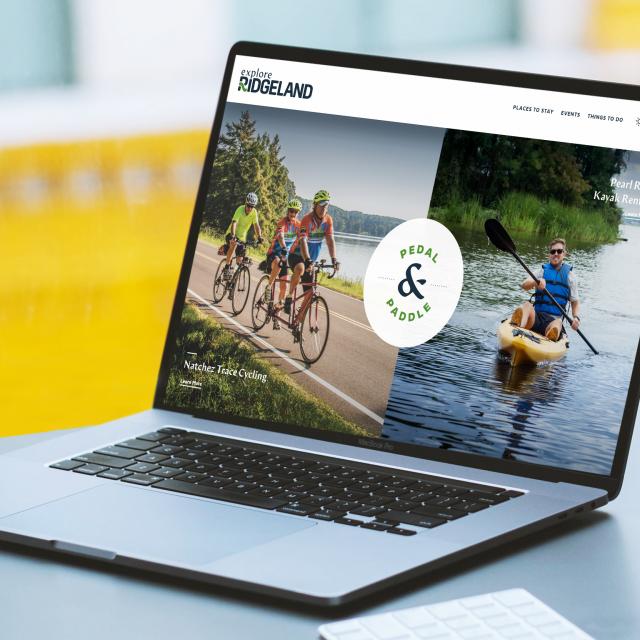Top 9 SEO Tips & Tricks for DMOs

Discover how proper SEO strategies can enhance your website's content and boost organic search discovery, performance and traffic.
Search Engine Optimization (SEO) is — or should be — the backbone of any Destination Marketing Organization’s (DMO) digital marketing efforts. It's the key to attracting more visitors, improving your destination's exposure, and increasing your website's rankings on search pages. In this guide, we'll delve into the top SEO tips tailored specifically for DMOs. Whether you're new to SEO or looking to refine your strategy, these tips will set you on the right path.
Follow these few simple steps to enhance your website’s performance and maintain optimal presence on Search Engine Results Pages (SERPs).
1. Understand Where Your Content is Ranking
To elevate your destination marketing website's performance, start by gaining insights into your current SERP ranking. Conduct a Google search using your destination paired with top keywords relevant to your content, such as "Things to do in [destination]," "Places to eat in [destination]," or "Where to stay in [destination]." This search will provide a firsthand look at where you stand in comparison to your competitors. Additionally, leverage powerful resources including free tools like Google Search Console and paid tools like Ahrefs, SEMRush, or similar platforms to gain a comprehensive overview of your website's ranking and identify areas for improvement. Understanding your current position is the first step towards optimizing your content for better visibility and engagement.

2. Keep Up with the Latest Search Trends and Keywords for Your Destination
Keyword research is key because they are the lifeblood of SEO, powering your website's search engine performance and attracting the right visitors. To uncover the perfect keywords for your website, let's keep it simple.
First, understand your destination inside and out – where do people want to go, what marquee events are they looking to attend, what are the local hotspots and restaurants tourists have on their must-see lists. Next, view the competition; check out what keywords they're going after.
And here's the secret sauce: keep an eye on keyword trends with tools like Google Trends to know when certain keywords are hot. Google Trends provides a comprehensive view of what captures the interest of online users, revealing the ebb and flow of search terms over time, across seasons, and within different locations.
Get inside the minds of those searching by understanding the intent behind keywords. Are they looking for information (think business hours, costs, dates of events), reviews (think “Best of” or local business round-ups), or solutions (think accessibility, maps, weather details)? Tailor your content to match their needs. Once you've chosen keywords, naturally integrate them into content, headings, and meta tags.
3. Craft a Click-Worthy Title Tag
Meta Titles serve as a sort of digital handshake, introducing your content to users and search algorithms alike. You'll find meta data on the digital marketing tab in the CMS and their significance lies in guiding search engines to understand the core theme of your page and evaluate its relevance to user queries.
For optimal visibility, ensure your Meta Titles are not only engaging but also keyword-rich. Imagine your title tag as a roadmap; if it lacks key terms like "Things to Do in [Destination]" or its variations, your page might struggle to secure a high rank for associated search queries. Mind the character count; Google truncates title tags after 50-60 characters. Embrace additional strategies like incorporating descriptive words like "Best" or "Top" in your title as well as numerical rankings like "Top 25 Things to Do."
Clarity triumphs over kitschy creativity in Meta Titles – get straight to the point. Swap out whimsical titles like "Scrumdiddlyumptious Morning Eats" for straightforward and user-friendly options such as "Best Breakfast Spots in [Destination]" or "Top 10 Breakfast Restaurants in [Destination]."

4. Entice Readers with a Custom Meta Description
Your website's Meta Description is the virtual teaser that compels users to click and explore further. Think of it as a concise yet compelling summary that not only entices readers but also strategically targets your chosen keywords. Craft a Meta Description that serves as a captivating snippet, offering a glimpse into the unique value your content provides. This brief text, usually between 150-160 characters, should not only be informative but also resonate with the user's search intent. Incorporate key terms naturally while maintaining a conversational tone to ensure both search engines and potential visitors find it irresistible. A well-crafted Meta Description not only boosts your click-through rate but also enhances your page's visibility on search engine results pages, making it an integral part of your SEO strategy.
For example, if you’re writing a Meta Description for the Food & Drink page include mention of destination drivers in your area like top restaurants or food experiences - “Explore the best restaurants in Philadelphia, including cheesesteaks from Pats, Geno’s, a variety of options from Reading Terminal Market and so much more.”
5. Add Image Alt Text
Nearly 19% of Google's SERPs now showcase images. That means that, despite your meticulous SEO strategies, there's a chance to miss out on another organic traffic stream – your website's images.
This is where Image Alt Text comes in– a golden opportunity to infuse more keywords into your content while simultaneously enhancing accessibility. With a character limit of 120, choose your words wisely, avoiding the temptation to keyword stuff.
Why does this matter? Search engines rely on text to comprehend images, and Image Alt Text bridges this gap. By providing context, Alt Text contributes to the usability and overall "score" of your website. Relevant Alt Text enables search engines to grasp the image's content, ultimately elevating your page's ranking in image search results. So, as you embark on optimizing your website, don't underestimate the impact of well-crafted Image Alt Text in maximizing both visibility and user experience.
6. Cultivate Quality Backlinks
Forge valuable partnerships with travel bloggers, influencers, and pertinent websites to cultivate high-quality backlinks. These connections from reputable sources can be a game-changer for your SEO ranking, not only boosting your visibility on search engines but also driving significant traffic to your website, especially when they originate from high-traffic partner sites. Make strategic outreach an integral part of your content plan; for instance, if creating a listicle, share the published list with featured partners and encourage them to link back from their sites or share on their social media channels.
Beyond the valuable links garnered from partners, be aware of the link sculpting within your own site. Integrate strategic hyperlinks within body copy, related content sections, and showcase blocks to interconnect related topics seamlessly. Extend this practice to include links to related partners and events. Picture it as creating a digital tour-guide within your website, gently guiding visitors through a curated journey of helpful resources and pertinent content that enhances their trip-planning experience. This intentional link sculpting not only boosts the navigational flow of your site but also ensures that visitors discover a wealth of relevant information effortlessly.

7. Boost Your Website's Searchability and User Experience
Visualize your website as a cozy bookstore, inviting visitors and search engine bots to navigate its digital aisles with ease. Ensure your site is easily crawlable, avoiding deep navigation and complex structures that hinder accessibility. Like the saying goes, 'If you build it, they will come,' but if it's not findable on search engines, they might not. Imagine your website as distinct sections in a bookstore; organize pages logically, placing them under relevant sections. For instance, the Hiking page belongs under 'Things to Do,' not buried in 'Food & Drink.' This clarity is appreciated by search engines. Link related content on the Hiking page, creating a hub of resources.
A well-organized website brings joy to visitors and aids search engines in effectively showcasing your content. Thoughtfully organize your digital shelves, and witness your website's visibility and ranking ascend.
8. Beware of 404 Errors
Approach website changes with caution, recognizing their potential impact on content, URLs, and page optimization. It's crucial not to alter a page URL without setting up a proper redirect to the new destination. Imagine someone clicking on an old link from the vast interwebs only to encounter the dreaded 404 page. This not only results in a frustrating experience but also risks losing link equity and organic traffic.
As a general best practice, always implement a 301 redirect for any pages you decide to close. This redirection is akin to leaving a forwarding address when you move – it ensures that visitors and search engines seamlessly reach the new location. Now, for a DMO-specific example, consider partner listings, a common culprit in our audits for 404 errors. When closing a partner listing due to closure or the end of the partnership, add a redirect pointing to its parent page. For instance, if "Jim's Steaks" listing is closed, set up a redirect directing users to the main Food & Drink hub. This simple yet effective practice not only preserves a positive user experience but also maintains the integrity of your website's structure during transitions.
9. Ongoing SEO Review
Picture SEO like tending to a thriving garden; it's a constant journey, not a one-time task. If your DMO has a website, your work is never truly done. Just like you'd check on your garden regularly, keep an eye on your keyword rankings. If they're not blooming as you'd like, don't worry. Be flexible and adapt your strategy as needed to help your online presence grow and flourish. Be sure to update your pages and blogs regularly, keep an eye out for outdated content, and update pages with relevant seasonal highlights and happenings. This not only helps with SEO but keeps your web visitors coming back for more, especially if they know they always have new content to look forward to.
It's crucial to make content updates a top priority, ensuring its helpful nature and alignment with Google's recent updates for sustained success. This is a common area where we often witness DMOs falling short. Remember, you don’t need to reinvent the wheel. If you already have a Holiday blog from 2023, breathe new life into it next year by showcasing the latest Holiday happenings in 2024. Keeping your website fresh doesn't require creating entirely new pages; instead, the key lies in consistent and strategic updates that reflect the dynamic nature of your destination.
Mastering SEO for your DMO is an ongoing adventure. These tips provide a foundation to enhance your website's visibility, attract travelers, and promote your destination effectively. Remember that SEO evolves, so stay updated with industry trends and adapt your strategies accordingly. By prioritizing user experience, content quality, and strategic optimization, your DMO will be well-equipped to thrive and connect with a global audience of travelers.
HOW CAN TEMPEST HELP?
Interested in learning more about the benefits of SEO on your DMO website? Have questions about how to get started, or need help building out optimized content? Contact Tempest today to learn more about our content, SEO and performance marketing solutions available as part of our Growth Marketing services.


